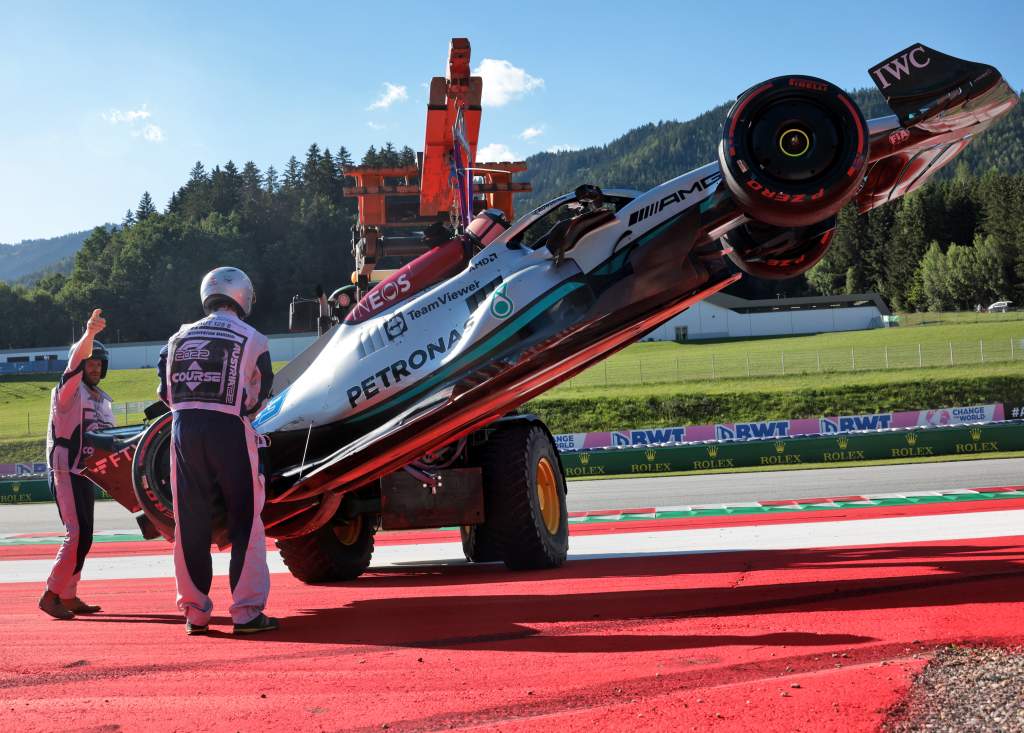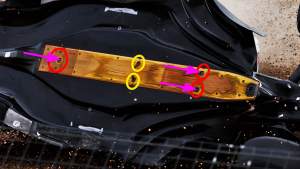Up Next

It’s good to see that with the cost cap the bigger Formula 1 teams are now having to learn how to cope with having a shortage of spares, meaning running repairs have become the norm. But for the smaller teams, this has always been a fact of life.
After both Mercedes cars suffered extensive crash damage thanks to first Lewis Hamilton then George Russell crashing during Q3 in Austria, the team had to do a cut and shut job on the floor of one of its cars.
As technical director Mike Elliott put it, Mercedes had “to build one floor out of two” because it simply did not have enough shiny new spares to bolt new ones onto each car. That meant the travelling composite team had to do a fairly comprehensive repair job.
Carbon composite repairs are never easy, especially when at the circuit. But most teams will carry some carbon material, a vacuum pump and an electric blanket to apply the heat required to set off the resin system.
With something like a floor, it will have two carbon skins – one each side of a honeycomb or foam central infill. If you are going to splice two together, you would stagger the joint line where you cut the skins, place both parts in place and overlap those joints with a new strip of woven carbon that is already impregnated with whatever resin system you use.
After that, you cover the repaired area with a breather cloth. Then, a plastic sheet gets taped down all the way around the perimeter of the repair. This will have a connector for the vacuum pump inlet.
You then start the pump up and make sure you can pull a vacuum on that area, then wrap it up in the blanket to generate the heat required to turn the resin system into a liquid and stand back for a few hours.
When that’s all done, you take the plastic sheet and the breather cloth off and tidy it all up. Yes, you have increased the weight slightly but you now have a part you can use.
Looking at the photographs of the floor, you can see some strengthening pieces have been added. These will likely have been added to increase the floor stiffness to reduce the floor flexing, which can very quickly lead to porpoising.
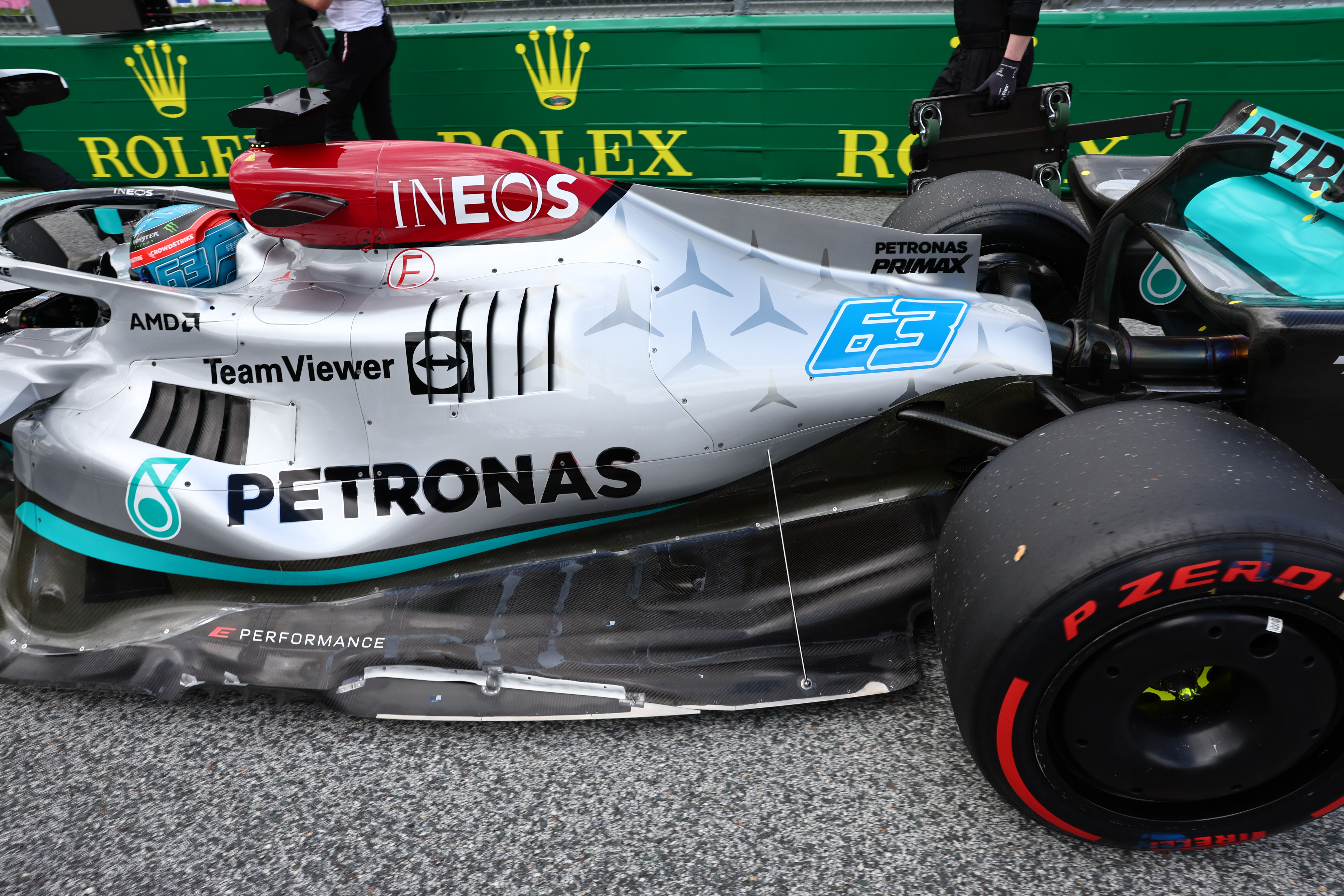
These aren’t part of the cut-and-shut repair, and we could also see them the race before at Silverstone, but it does show changes can be made without spending a fortune.
Adding strips across the floor like this to strengthen it is a very similar process to the one mentioned above. But it would probably been done back in the workshops as opposed to at the track.
Basically, you are just adding more material to increase the stiffness. With that will come a small weight increase, so again it is the compromise we often talk about – weight against aerodynamic gain. These changes might add 1kg to the floor, which is really too big an increase.
I have to say, the finish detail along the outer edge of the floor where it goes from carbon (black) to a different material (silver), which I have marked with a red line, looks more like what I would expect to see at an historic F1 event at Silverstone rather than a 2022 F1 grand prix.
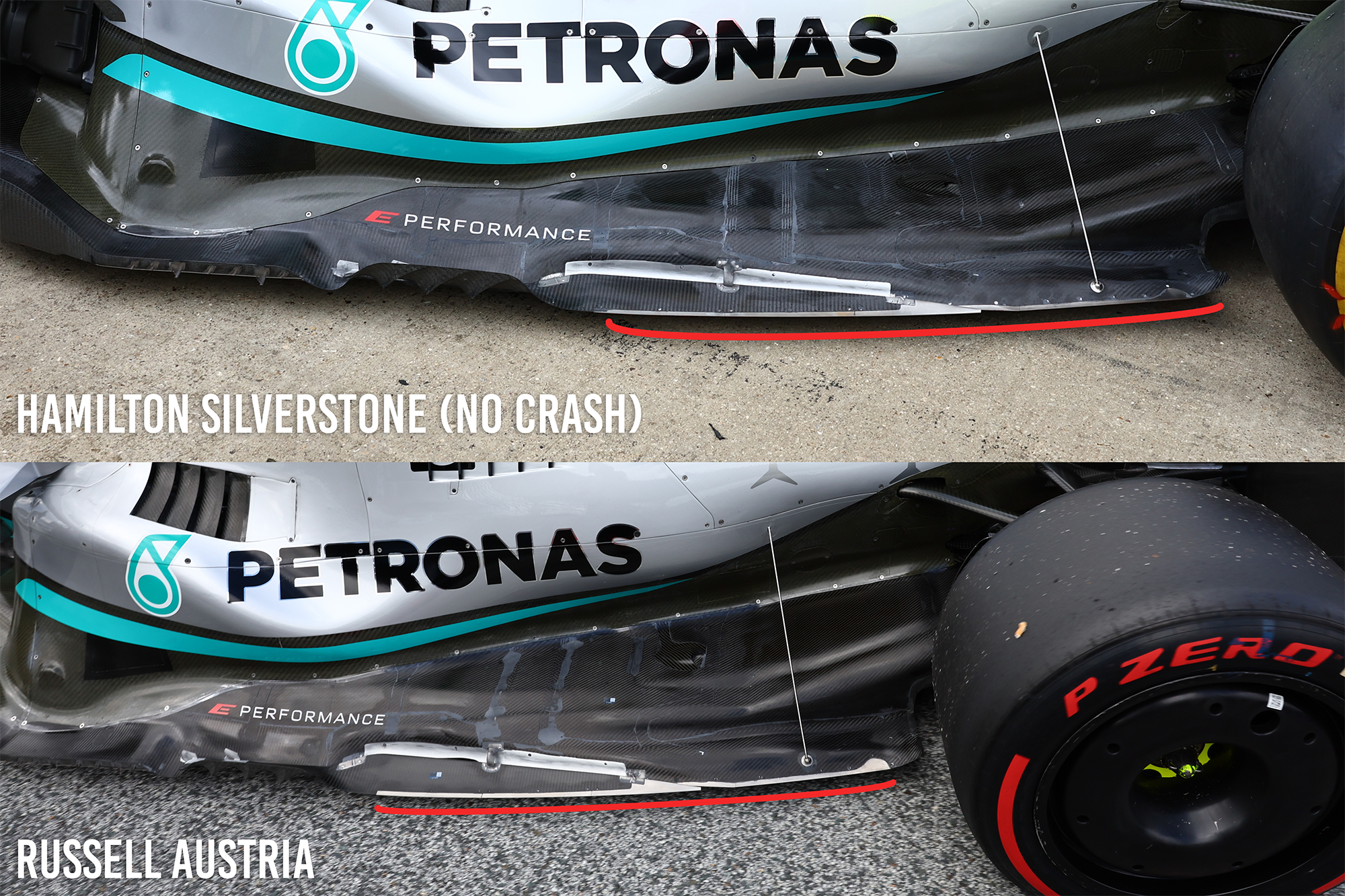
I know Mercedes has been very busy trying to find solutions to its porpoising and bouncing troubles, but this knife-edge on the outside of the floor it has created just in front of the rear tyre could very easily be a major part of its problems.
Back at Jordan in 1993, when I was technical director, we were having some rear tyre degradation problems with the Jordan 193. It was the first year of the narrower-track regulations and we went the route of a shorter wheelbase to match that. It proved to be the wrong decision and we needed to dig deep to try to recover.
Over a weekend, just before heading off to a the final in-season test at Estoril just before the final races of the season, I decided we should move the rear wheels rearward. This would increase the wheelbase, but more importantly allow us to run a more forward weight distribution.
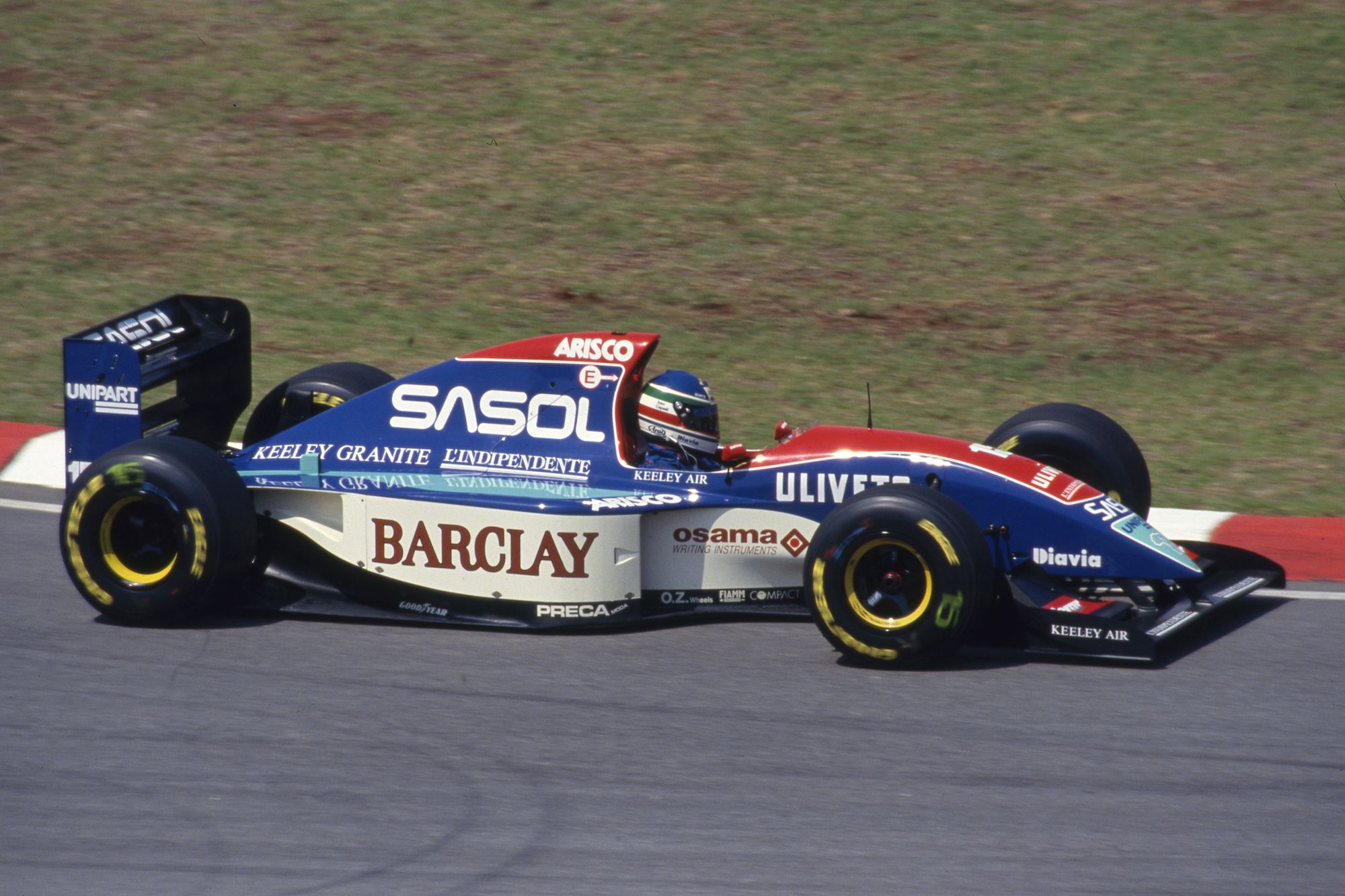
The big question was by how much? That was decided very quickly and easily by finding out what length of clutch shaft our manufacturer could manufacture over that weekend. We went for 15cm.
Our machine shop set about carving a spacer out of a rather large lump of aluminium and making up some longer engine-to-gearbox studs. Meanwhile, the composites department cut and shut two floors, similar to what Mercedes did in Austria. Who knows, it might even have been the same guy who left Jordan to go to what’s now Mercedes many years ago!
While that was going on, a couple of us did a similar thing to the engine cover. It might not have looked pretty, but by Monday night it was on the truck heading for Estoril.
It took a bit of running to get the best out of the set-up, but the positive thing was that both drivers were happy and the car now made more sense to them, and we massively reduced the rear tyre degradation.
I suppose what that all says is: where there is a will, there is a way. And perhaps the cost cap will force the big teams in particular to use a bit more ingenuity in the near future rather than relying on endlessly making new parts and throwing them at the car?


